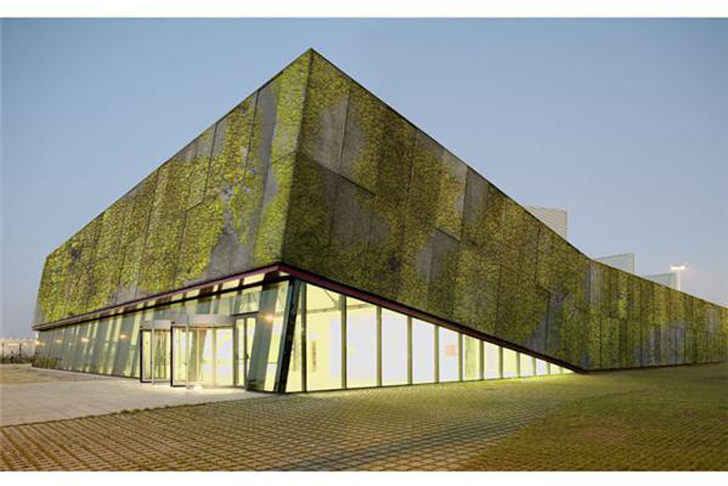
The innovative feature of this new (vertical multilayer) concrete is that it acts as a natural biological support for the growth and development of certain biological organisms, to be specific, certain families of microalgae, fungi, lichens and mosses.
The Structural Technology Group has developed and patented a type of biological concrete that supports the natural, accelerated growth of pigmented organisms. The material, which has been designed for the façades of buildings or other constructions in Mediterranean climates, offers environmental, thermal and aesthetic advantages over other similar construction solutions. The material improves thermal comfort in buildings and helps to reduce atmospheric CO2 levels.
In studying this concrete, the researchers at the Structural Technology Group of the Universitat Politècnica de Catalunya • BarcelonaTech (UPC) have focused on two cement-based materials. The first of these is conventional carbonated concrete (based on Portland cement), with which they can obtain a material with a pH of around 8. The second material is manufactured with a magnesium phosphate cement (MPC), a hydraulic conglomerate that does not require any treatment to reduce its pH, since it is slightly acidic.
On account of its quick setting properties, magnesium phosphate cement has been used in the past as a repair material. It has also been employed as a biocement in the field of medicine and dentistry, indicating that it does not have an additional environmental impact.
The innovative feature of this new (vertical multilayer) concrete is that it acts as a natural biological support for the growth and development of certain biological organisms, to be specific, certain families of microalgae, fungi, lichens and mosses.
Having patented the idea, the team is investigating the best way to promote the accelerated growth of these types of organisms on the concrete. The goal of the research is to succeed in accelerating the natural colonisation process so that the surface acquires an attractive appearance in less than a year. A further aim is that the appearance of the façades constructed with the new material should evolve over time, showing changes of colour according to the time of year and the predominant families of organisms. On these kinds of buildings, other types of vegetation are prevented from appearing, lest their roots damage construction elements.







